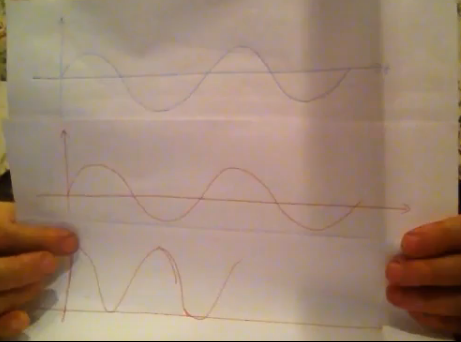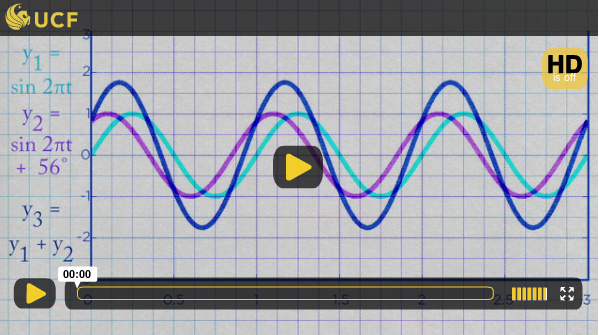
Most academic disciplines include highly conceptual or abstract concepts that are difficult for students to grasp. For instance, building a solid foundation of conceptual knowledge for students is critical in engineering education (Streveler, Litzinger, Miller, & Steif, 2008). An incomplete conceptual understanding hinders the development of central engineering competencies and expertise. However, it is a challenge for instructors to communicate these abstract and complicated concepts to students in engineering courses.
The cognitive theory of multimedia learning (Mayer, 2002) has suggested that students could learn more deeply using multimedia explanation, rather than mere verbal or textual explanation. This strategy seeks to illustrate complicated engineering concepts and promote situated understanding through short and memorable multimedia videos.
Link to example artifact(s)
- Professor: Dr. Lei Wei, University of Central Florida
- Course: EEL3552C: Signal Analysis and Analog Communication
Understanding and knowing how to manipulate signal waveforms is one of the key skills that students need to develop in college engineering education. In the past 5 years, Dr. Lei tried to demonstrate various signal waveforms using pen and paper in his flipped learning course. The image below illustrates how Dr. Wei normally explained signal waveforms using this traditional method.
The success of this pen-and-paper method was not impressive. Since the concepts of waveform changes are abstract and complicated to grasp, Dr. Lei Wei had found that more than half of his class were struggling due to an incomplete conceptual understanding. In 2013, Dr. Wei and his teaching assistant worked with the Video@CDL team to produce a series of short, online illustrative videos to demonstrate concepts around signal waveforms. Below is the first segment in this video series. This video illustrates the mixture of two signals, i.e., the sum of two sine waveforms, in which the second signal changes its phase from zero to 180 degree. The images of this video were produced using MATLAB so students can get an accurate simulation of the waveform changes.
This series of videos was shown to students in EEL3552C in fall 2013. Students enjoyed watching these videos and found them very useful for understanding the course content and increasing general knowledge in engineering. They thought the online videos complemented the face-to-face lectures. Students also expressed a strong interest that they would like to see more videos like these in this class and other engineering classes.
Link to scholarly reference(s)
Mayer, R. (2002). Cognitive theory and the design of multimedia instruction: An example of the two-way street between cognition and instruction. New Directions for Teaching and Learning, 89, 55–71. https://doi.org/10.1002/tl.47
Streveler, R. A., Litzinger, T. A., Miller, R. L., & Steif, P. S. (2008). Learning conceptual knowledge in the engineering sciences: Overview and future research directions. Journal of Engineering Education, 97(3), 279-294.
Citation
Wei, L. (2016). Use videos to illustrate complicated conceptual knowledge. In B. Chen & K. Thompson (Eds.), Teaching Online Pedagogical Repository. Orlando, FL: University of Central Florida Center for Distributed Learning. https://topr.online.ucf.edu/videos_complicated_knowledge/.

